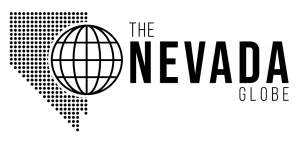
Prescription costs (Photo: Flickr)
High Drug Prices: Are Pharmacy Benefit Managers Part of the Problem or a Potential Solution?
PBMs have their share of critics, but the real issue is the lies in the drug pricing monopoly
By Aaron Bren, April 5, 2024 12:42 pm
The rising costs of prescription drugs plagues Nevada residents and Americans across the nation. Understandably, Pharmacy Benefit Managers (PBMs) often find themselves in the crosshairs. But are they the primary villains in our healthcare system’s drug pricing monopoly, or could they offer some solutions, given the right circumstances?
Understanding PBMs: Middlemen in a Complex System
PBMs were created to manage the complexities of prescription drug benefits for large employers. Essentially, they act as middlemen, handling tasks like:
- Negotiating drug prices: They leverage their size to secure discounts from drug manufacturers.
- Developing formularies: They create lists of approved drugs for health plans, categorizing them according to their varying out-of-pocket costs for patients.
- Building pharmacy networks: They arrange for patients to access their medications at contracted pharmacies.
- Processing claims: They manage the administrative side of filling prescriptions.
PBMs also play a crucial role in promoting safe and effective medication use through Medication Therapy Management (MTM), which supports patients on complex medications to understand the treatment and ensure they take them correctly, and Drug Utilization Review (DUR) programs that help catch potential drug interactions or inappropriate uses of medications.
Where’s the Problem? Criticisms and Market Power
PBMs have their share of critics. Transparency is a major concern, as are practices focused on securing rebates from drug manufacturers rather than always prioritizing the most cost-effective medication for patients. The real issue, however, lies in the drug pricing monopoly itself.
PBMs have their greatest influence on employer-sponsored health plans, with employers who directly contract with a PBM having the flexibility to lessen the negative aspects of PBMs. Those buying individual health insurance interact less directly with PBMs, but they’re still affected by the high drug prices caused by the monopoly.
When insurance companies own their own PBMs, decisions can be skewed toward company profits rather than the patient’s best interest. Even when employers contract with the “Big 3” PBM players, CVS Caremark, OptumRx, and Express Scripts, their 80% market dominance holds tremendous power, allowing them to influence drug prices and which medications even make it onto health plan formularies.
Unlike the “Big 3,” PBMs that often operate as opaque, profit-driven entities, smaller, independent PBMs generally prioritize transparency and patient savings. They’re more likely to share details about the discounts they negotiate with drug companies, ensuring that any cost reductions are passed down to the patients they serve.
Smaller PBMs understand that not all health plans operate similarly, and a cookie-cutter approach to prescription drug benefits can leave patients underserved. This can mean implementing innovative programs to improve patient adherence or offering personalized medication therapy management services for those with complex health conditions. Ultimately, this personalized approach demonstrates that a patient-centric model for managing drug benefits can exist within our complex healthcare landscape.
So, are PBMs the Problem or Part of the Solution?
The answer is both.
Insurance companies and the “Big 3” PBMs contribute to the distorted incentives and lack of transparency perpetuating the drug pricing monopoly. However, smaller PBMs and healthcare innovators, alongside systemic reforms, have the potential to be part of the solution. To create lasting change, patients and payers (employers and health plans) need to see how drug prices are determined and the factors driving their costs.
While PBMs play a significant role in the drug pricing monopoly, they aren’t the root cause. True solutions lie in fixing the system that allows a few players to hold immense power, prioritizing profits over patients’ access to affordable, life-saving medications.
While PBMs are visible players within the drug pricing monopoly, focusing our outrage solely on them obscures the fundamental problem: a system designed to benefit a select few – giant PBMs, vertically integrated health plans, and pharmaceutical companies – who hold tremendous power to dictate the prices Americans pay for the medicines they rely on.
This system rewards those prioritizing profits over patients, leaving individuals and families struggling to afford the necessary treatments. True solutions demand that we look beyond a single scapegoat and challenge the systemic imbalances perpetuating increased healthcare costs.




